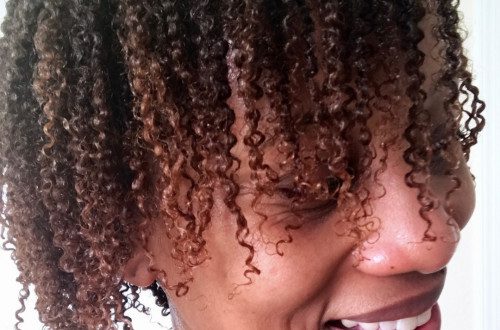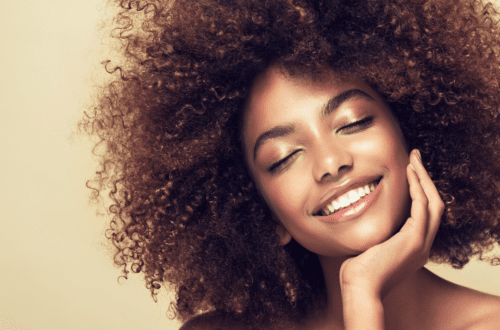
The More You Know: Why Ingredients Matter
I’m sure by now many of us have read articles or seen news stories about the study that reported that many of the hair care products commonly used by African American women were disproportionately laced with harmful chemicals labeled endocrine disrupters. Endocrine disrupters have created great concern because they are linked to several hormonal imbalances and can increase risks of cancer, early puberty, fibroids, infertility, and pre-term births.
When I first heard the story, I assumed that the harmful chemicals were only present in relaxers, a product that I had long since abandoned. Further research revealed that these chemicals were not only limited to relaxers and hair straighteners, but could also be found in hot oil treatments, leave-in conditioners, shampoos, hair lotions, root stimulators, and anti-frizz agents. While the study was limited to a list of brands and products most commonly reported to be used by the people in the study, it does give you pause and cause you to wonder what is actually in the products we are routinely using.
Highlights from the study (1)
- Hair products for Black women contained mixtures of different endocrine disrupting and asthma causing chemicals.
- Hair relaxers for children contained regulated or restricted chemicals.
- All tested products contained fragrance chemicals.
- Seventy-two percent of products contained parabens and diethyl phthalate.
- Eighty-four percent of detected chemicals were not listed on the product label.
Ingredients to watch out for
There was a long list of ingredients, commonly used in hair care products, that were found to be harmful or noted to be of concern. Check out the chart at the end of this article for the classes of chemicals targeted in this study and their uses.
Now What?
I know that this long list of drugs, many with names that are difficult to pronounce will probably add to the panic that ensues when we hear anything about toxic products and the risk of cancer. The purpose of this piece is not scare you, but to empowered you to make informed decisions when choosing products.
There are several apps and online resources that are available to help you decipher ingredients and be more knowledgeable about what you are putting in and on your body. My go to is EWG’s Skin Deep Cosmetics Database and the creators of the study have also created Detox Me, Silent Spring’s free mobile app for healthier living. Consider using these or any of the other free online apps and resources when learning more about the products you use.
My take away from the study:
- Hair care products are not regulated the same way drugs are. There seems to be more leeway when it comes to what goes into your hair care and beauty products and how they are made. While these products are not regulated by the FDA, there are safe practice guidelines to adhere to and additional certifications that companies can seek to ensure the safety of their products.
- More research needs to be done. This study was just the “tip of the iceberg” so to speak. While there are some studies out there confirming that exposure to endocrine disruptors is harmful, there is still more research that needs to be done to determine what extent exposure via hair care and beauty products plays. This study may have had some limitations, but it has definitely started conversation and created a pathway for more robust research in this area.
- We should be more mindful about the products we use. One of the things that stuck with me was that a lot of these harmful ingredients were not even listed on the product’s label. Ingredient trackers won’t help us find what we cannot see. Generalizations like “fragrance” can encompass multiple chemicals, and companies aren’t required to list all of them on the label.
Ways to reduce exposure:
Lifestyle, time, convenience, and budget all play a role in determining what products we choose to incorporate into our beauty routine. I am not calling for an all-out band on synthetic products, but I am suggesting that we take a closer look at what’s on the label. Look for the phrases “phthalate-free” and “paraben-free” and try to avoid the following ingredients: siloxane, cyclomethicone, benzophenone, octinoxate, octyl methoxycinnamate, oxybenzone, diethanolamine or DEA, paraben, fragrance or parfum, and triclosan (2).
At Bold Kulture Beauty we aim to bring you the highest quality products with safe ingredients designed to aide you on your natural hair journey. For more tips on ways to reduce exposure check out this fact sheet from Silent Springs Institute and visit us at boldkulture.com.
Chemicals targeted in the study
*chemicals in italics were not found in the products tested
| Chemical Class | Use in Products | Potential Health Concerns | Chemicals Targeted in the Study | |
| parabens | preservative; anti-microbial agent | endocrine disruption | methyl paraben ethyl paraben butyl paraben | |
| phthalates | plastic additives; solvents in cosmetics and perfumes; inert ingredient in pesticides | endocrine disruption asthma carcinogenicity | bis(2-ethylhexyl) adipate bis(2-ethyhexyl) phthalate benzylbutyl phthalate di-cyclohexyl phthalate di-isobutyl phthalate di-isononyl phthalate di-n-butylphthalate di-n-hexyl phthalate di-n-octyl phthalate di-n-propyl phthalate diethyl phthalate | |
| bisphenol A | polycarbonate plastic and epoxy resins | endocrine disruption asthma carcinogenicity | bisphenol A | |
| antimicrobials | anti-microbial agent | endocrine disruption asthma | o-phenyl phenol triclosan triclocarban | |
| ethanolamines | solvent in cleaners; emulsifier in creams and lotions | endocrine disruption asthma | Monoethanolamine diethanolamine | |
| alkylphenols | surfactant; disinfectant; inert ingredient in pesticides | endocrine disruption | 4-t-octylphenol octylphenol monoethoxylateoctylphenol diethoxylate 4-t-nonylphenol nonylphenol monoethoxylate nonylphenol diethoxylate | |
| fragrances | scent; masking agent | endocrine disruption asthma carcinogenicity | Synthetic AHTN Bucinal diphenyl ether DPMIHHC Bisobornyl acetate methyl ionone musk ketone musk xylene phenethyl alcohol Natural Benzylcetate eugenol hexyl cinnemal limonene linalool methyl eugenol methyl salicylate pinene terpineol | |
| glycol ethers | solvent | asthma | 2-butoxylethanol 2-phenoxylethanol 2-benzyloxyethanol 2,2-methoxyethoxyethanol 2,2-ethyoxyethoxyethanol2,2-butoxyethoxyethanol | |
| cyclosiloxanes | enhance lubrication and spreading | endocrine disruption carcinogenicity | octamethylcyclotetrasiloxane (D4) decamethylcyclopentasiloxane (D5) dodecamethylcyclohexylsiloxane (D6) | |
| UV filters | sun protection; product stability and durability | endocrine disruption carcinogenicity | Benzophenone benzophenone-1 benzophenone-2 benzophenone-3 oxtinoxate octadimethyl PABA |
References:
- https://www.sciencedirect.com/science/article/pii/S0013935118301518#t0005
- https://silentspring.org/news/hair-products-black-women-contain-mix-hazardous-ingredients/guide-healthier-hair-care-options
- https://silentspring.org/project/consumer-product-use-women-color
- https://www.ajc.com/blog/talk-town/study-reveals-black-women-exposed-toxic-chemicals-hair-products/wZuSPvKCmm5nyfr2tiUghO/
- https://www.scientificamerican.com/article/hair-products-popular-with-black-women-may-contain-harmful-chemicals/#




